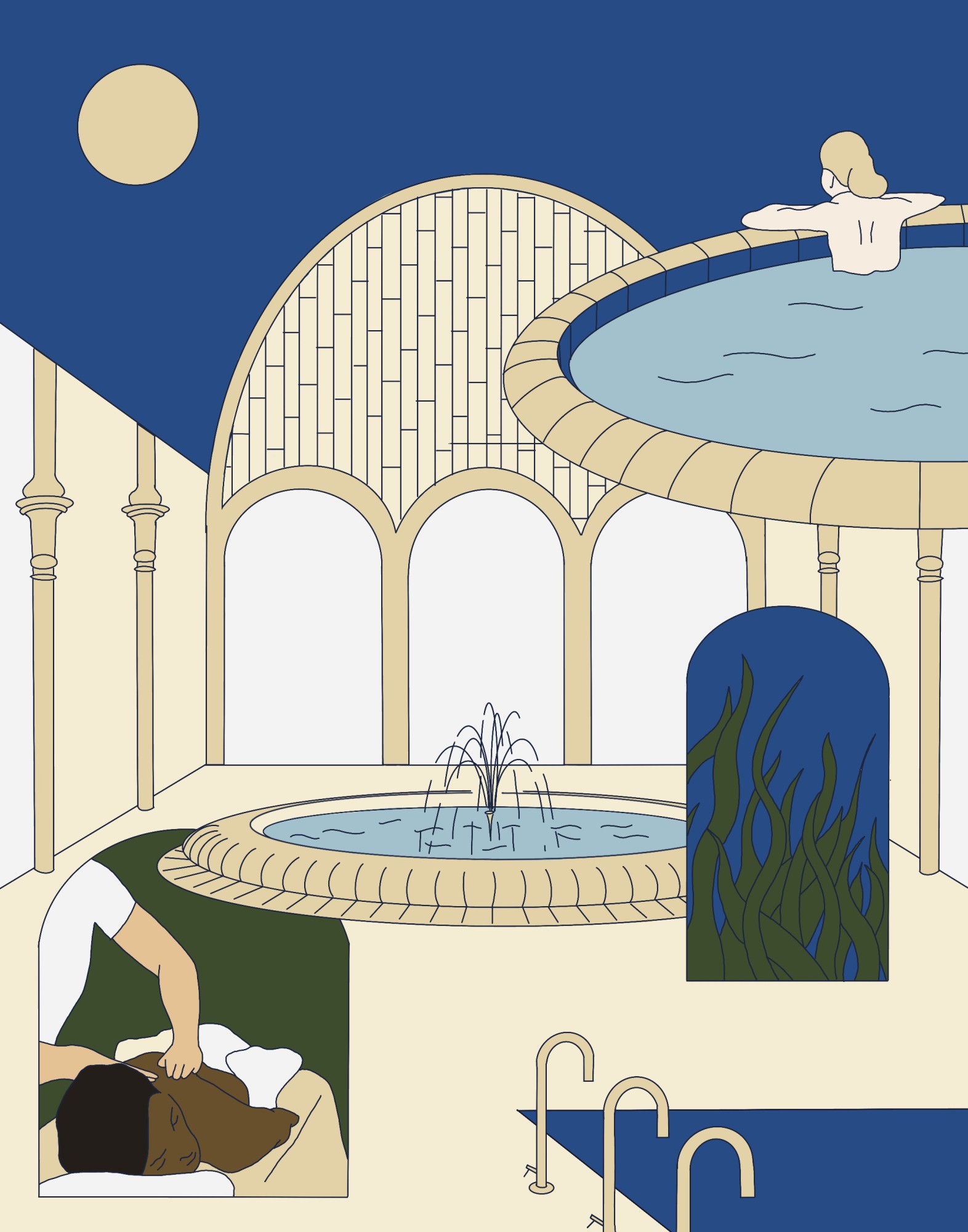Thalassotherapy
Since ancient times, water has been associated with cleanliness, beauty and health. Many ancient cultures developed special baths and cleansing ceremonies. Religious rituals and medical treatments with water or marine products are often not clearly separable. A Sumerian clay tablet, dating from around 3000 BC, is the first known document about algotherapy. One of the oldest known public baths was excavated in Mohenjo-daro, Pakistan, dating back to the third millennium BC. Balneotherapy, the treatment of diseases by bathing, can be divided into thermalism and thalassotherapy. In thermalism, water from hot springs is used. This was the case in Roman baths, for example, which already offered a wide range of wellness and medical treatments. In the later years of the Roman Empire, however, medicine and hygiene took a back seat and wellness and pleasure prevailed. Due to Christianization, the Roman baths fell into disrepute in the Middle Ages and the bathing tradition was discontinued. In the eighteenth century, English physician Richard Russell treated his patients with seawater—not only by bathing but also drinking it. Today, however, the latter is no longer practiced. Modern thalassotherapy includes, in addition to baths in seawater, treatments with seaweed, silt, and sand, or exposure to sunlight and sea air. In many coastal locations, a commercially successful industry has been established on the basis of the therapeutic properties of the sea. However, things have not changed much since Roman times: Even today, thalassotherapy is caught between wellness and evidence-based medicine.
Sources: Antonelli, Michele and Davide Donelli, “Thalassotherapy, Health Benefits of Sea Water, Climate and Marine Environment: A Narrative Review”, Environmental Sciences Proceedings, vol. 2, (2021).
van Tubergen, A. and S. van der Linden, “A brief history of spa therapy”, Ann Rheum Dis 61, (2002): 273–275.
Charlier, Roger and Marie-Claire Chaineux, “The Healing Sea: A Sustainable Coastal Ocean Resource: Thalassotherapy”, Journal of Coastal Research, vol. 25, (2009): 838-856.
